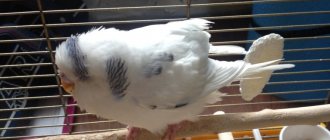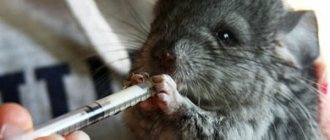Cute furry babies - pet hamsters, have long and firmly occupied the niche of pets. Getting a cat or dog is quite a troublesome story. You need to walk with them, spend a lot of time on their hygiene and other needs. Hamsters in this sense are an ideal option. They do not cause excessive trouble with feeding, do not require special care or effort in training, and do not damage furniture or interiors.
It’s so common for these little lumps, sitting in their cages, to be exclusively occupied with eating and building holes, that when the hamsters start making alarming sounds , we get lost and don’t understand what to do.
The hamster makes strange sounds: why it squeaks, what to do
With the exception of quite rare cases when the hamster squeaks briefly as a sign of greeting, all other reasons for persistent squeaking require understanding and often taking countermeasures.
Most often, hamster squeaking is provoked by:
- stressful situation;
- thirst;
- dreams;
- illness;
- defensive behavior.
In a dream
In a dream, a hamster squeaks not so rarely, which is mainly its reaction to events developing in dreams. At the same time, the animals often wiggle their paws and demonstrate active facial expressions on their faces.
However, sometimes a squeak in a dream can act as a signal indicating an onset of illness.
Stress
Most often, a hamster finds itself in a stressful situation when changing its place of residence. Finding itself in a new environment with unfamiliar surroundings and foreign smells, the animal experiences shock and begins to squeak. To adapt to a new home, a hamster usually needs about a week, during which it is advisable not to disturb him.
Defensive behavior
Sometimes the hamster squeaks desperately, as if trying to protect itself from an enemy, which it imagines to be an unfamiliar person or animal near its cage.
In such a situation, the animal may even behave aggressively towards the new owner.
Hamster is thirsty
In the drinking bowl, which must be present in the hamster cage, due to an oversight of the owners, water may run out. And then the animal has no choice but to draw the attention of the owners to the problem with an excited squeak. And the sooner the animal’s owners establish the cause of the squeaking, the sooner it will stop.
Got sick
The most serious reason for an animal’s constant squeaking is some kind of disease. This happens against the background of the animal’s sluggish movements, apathy, loss of appetite and obvious drowsiness.
The hamster stops taking care of his appearance, and his fur looks unkempt. In this situation, the intervention of a veterinarian is required.
How to decipher sound signals
Caring owners will not deliberately tease their pet when they hear a hamster squeak. The added stress shortens the hamster's already short lifespan. But it's very helpful to have an idea of what beeps might mean.
Squeak
Dzungariki makes a faint squeak as a sign of greeting. Little hamsters are happy to meet their owner and try to attract his attention. But the reason may be more common: the animal has run out of food and asks for the feeder to be refilled.
Sometimes animals make strange squeaks in their sleep. During exciting sleep, the hamster may touch its paws. However, constant night squeaking signals pain, so consultation with a veterinarian is necessary.
Snort
Hamsters sometimes snort or snort loudly. The most common cause is nasal congestion. A short sneeze will help clear your airways of dust and crumbs, but if you have a cold, you'll need special treatment.
Sniffling
Heavy breathing signals a malfunction in the animal's body. Most likely, the animal was in a draft for a long time and caught a cold. If sniffing is accompanied by shortness of breath, the rodent must be treated immediately.
Cry
Screaming and crying: These sounds are very rarely made by hamsters. Small animals cry in unfamiliar surroundings when they are brought to a new home. The only way to calm down is loneliness. Guests should only approach the cage to change food and water. After a few days the situation will stabilize.
Hamsters willingly communicate with people, sit back and play. But rodents do not tolerate rough handling well. Constant harassment can turn a good-natured pet into a screaming hamster that can sink its teeth into the hand of the offender.
Important! When rodents cry, no tears flow. If droplets are visible on the face, the animal has contracted a respiratory infection.
The hamster screams from overexcitation of the nervous system. Holders of constant attention can aggravate the situation, and a quiet squeak will turn into a hysterical roar. Only complete privacy in the house will comfort the animal.
Crackling
Periodically, a chirping sound is heard from the cage, similar to the crackling of a woodpecker. This means that the animal takes care of its fur. These animals perform hygiene procedures using their hind paws; sometimes they touch the walls of the cage, and the owners hear a rattle.
Hiss
The loudest sound is hissing. The rodent then tries to scare the enemy and send him on the run. The aggressiveness of the animal's intentions is evidenced by its posture: the mouth is wide open, the front teeth are exposed, the body is arched. If the enemy ignores the warning, the battle may begin.
The hamster also screams in extreme fear. Usually he tries to escape, but if unsuccessful, he turns around with his paws raised and makes a high-pitched sound.
Rules for caring for a hamster at home
Since hamsters are very susceptible to stress, from the very beginning you should pay special attention to transporting the animal home and arranging its home there. For this, there are certain rules developed over many decades:
- It is best to transport a purchased hamster home using a plastic carrier or in a three-liter jar. Upon arrival home, you should not immediately move the animal to its house, but you should give it the opportunity to get used to its new environment.
- Experts advise keeping these animals in a cage or aquarium, giving preference to a cage. But it is strictly forbidden to keep animals in cardboard boxes or plastic containers, as well as in glass jars.
- The hamster's home must be at least 60 cm long and 40 cm wide. The cage should be selected exclusively with a horizontal arrangement of bars for ease of movement of the hamster in it.
- Bedding in cages is best made from sawdust, toilet paper, special corn litter for rodents or, as a last resort, from old newspapers. It is highly not recommended to use rags and cotton wool for these purposes.
- The hamster cage must be equipped with an automatic drinker, in which a dispenser on a container of water dispenses portions only after the hamster’s tongue presses a special ball.
- In addition to the drinking bowl, the cage should have two feeders attached to the bars - for dry grain food and for vegetables and fruits.
- It is useful to acquire a mineral stone, which helps the animal sharpen and clean its teeth, while at the same time supplying it with vitamins.
- Hamsters choose a place to perform their natural needs independently in one of the corners of the cage. You need to clean the cage more often, since hamsters do not like dirt and will look for a new place if the previous one is dirty.
- Active animals should definitely have a running wheel in their cage. It is best if it is made of plastic.
- It is recommended to place the cage in the quietest place in the home, out of reach of ultraviolet rays, as well as children and pets such as dogs and cats.
How to treat a wound after a bite?
What to do if bitten by a pet hamster? The rodent should be returned to the cage and the wound should be washed. A hamster bite can be very painful. This is due to the structure of the teeth: they are not only long, but at the moment of a bite they can move in different directions, so the pain will be severe. It is possible that the wound will be torn (and not just by a bite). If the hamster bites before bleeding, the wound must be treated:
- Wash the bite site with warm soapy water. We use laundry or antibacterial soap.
- Let's treat the wound with an antiseptic. This could be iodine, hydrogen peroxide, brilliant green, alcohol.
- Place a band-aid on the top to prevent germs from entering. If the hamster bit your finger before bleeding, then apply a rubber pad.
- The animal bite site is painful, so it is advisable to take a painkiller.
Often the wound is not treated at all and the consequences are not taken into account. If the bite is shallow and the immune system is strong, the wound will gradually heal and heal.
What should I do if my pet has not received the rabies vaccine? We treat a wound in the same way, but at the same time we find out what causes it. After passing the tests, it will become clear whether you need to get vaccinated. You can protect yourself right away by getting a rabies vaccine, although this is also quite painful.
Djungarian hamsters (and other breeds) can be carriers of not only rabies, but also meningitis, salmonellosis and many other unpleasant diseases, including parasitic ones. If he is aggressive, agitated, or sleeps little, it is advisable to check him for infections. When a furry pet becomes lethargic or dies after a few days (which does not happen often), it is worth vaccinating it so that it does not become a source of infection.
Why does a hamster squeak, scream, make strange sounds of screaming and crying?
Sometimes the owner may notice that his hamster is squeaking. The volume and reasons for the squeak vary and depend on the character and breed of the hamster. For example, sounds can be heard extremely rarely from a Syrian hamster, while Djungarians are more temperamental.
Caring owners are disturbed by squeaking, snorting and other unusual sounds. Hamsters are usually calm, quiet and unpretentious, and squeaking may indicate discomfort. First of all, you need to find out why the hamster squeaks. There may be several reasons.
Causes
- Marriage games.
When a male hamster courts a female, he sings a song to her. The most gallant individuals perform a serenade for the female before starting mating.
There is no need to worry prematurely. Quiet squeaking can mean joy from a pleasant meal or meeting with the owner. If your hamster is cheerful and energetic, but starts squeaking when he sees you, know that this is how he says hello!
The hamster may become agitated, for example, when moving. New surroundings and smells frighten the fluffy, and he may squeal. It usually takes a rodent about a week to get comfortable in a new space. During these days, it is recommended not to disturb the hamster, not to squeeze it, not to pick it up. Over time, the pet will adapt and stop squeaking.
The cute hamster becomes aggressive when it comes to protecting his territory from any other rodents, including his own brothers. If the owner carelessly places two hamsters in the same cage, a fight will inevitably occur. Before a fight, the hamster makes loud sounds similar to squeaking and hissing, as well as crackling and chirping to scare the enemy.
If your hamster squeaks when it hasn't done so before, check to see if it has food and water. Perhaps he is tormented by hunger or thirst. An animal may also vocalize if it is hot or its cage is dirty.
Oddly enough, some are sure that hamsters do not drink water, but get all the necessary moisture from juicy food. In fact, hamsters, excluding newborns, need water. You need to place a drinking bowl in the cage where there will always be fresh water. It is necessary to train your pet to use it.
Excessive attention from owners
Close attention and excessive care will harm not only human relationships, but can also cause cannibalism in female hamsters. Since this rodent is a solitary animal, and after the birth of the cubs, the female needs a secluded environment and tranquility even more, excessive care will only harm these animals. Do not pick up hamsters and do not get into the cage. Let your family see you less.
Foreign odors repel the mother hamster. Sensing a foreign smell, she does not identify the cubs as her own creatures and, as a result, abandons them and destroys them. Do not touch the hamster family for one to two weeks after the babies are born!
It is necessary to prepare in advance for the new offspring of furry rodents. When cleaning the cage, if you find hamster supplies, do not touch them. This is a strategic supply of products, which unpleasantly traumatizes the animal’s psyche in the event of its loss, even to the point of an uneven breakdown in a pregnant female. Only spoiled products can be thrown away to avoid the growth of putrefactive bacteria, odor and poisoning.
To arrange your own nest, it is recommended to put a few paper napkins. Your task is to fill the drinking bowl with clean drinking water and pour food into the feeder on time. This is all that the rodent needs from its owner at this time. Nature will do the rest.
Learning how to care for a hamster
When getting a pet, you need to find out as much as possible about its habits and the peculiarities of caring for it. Here are some tips:
- In new conditions, the animal may initially experience stress, so it should not be disturbed.
- When changing bedding, leave a piece for the animal to recognize its smell.
- Periodically do a general cleaning of the cage.
- Do not put several individuals in one cage. Each of them should have their own territory.
- Study the dietary features of hamsters of this breed.
If a Djungarian hamster squeaks and at the same time gnaws the bars of the cage, it means that the owner is not caring for him correctly.
How to stop biting
For a biting pet, a number of measures are carried out on how to wean a hamster from biting: you need to choose the right cage, equip a separate corner where the hamster can sharpen its teeth and claws, and provide the animal with peace and calm. The taming process takes several days:
- Before contact, the animal is pacified with a treat. Hamsters love sweets and fresh fruits. While the rodent is eating, a hand is placed in the cage so that the animal gets used to foreign odors. First, the domestic rodent hides and brings food to the corner. You don't need to disturb your pet.
- The next day, the treat is placed in your palm. Hamsters sniff and examine unknown objects - a rodent usually sniffs a finger or palm.
- When the rodent climbs onto your hand, you can pet it. Hamsters are cowards, so it is dangerous to accustom them to your hands without sweets the first time. You must not touch the rodent's head, otherwise you will not be able to avoid a bite.
- On the third day, during feeding, the animal is carefully removed from the cage. Djungarian rodents get along more easily in pairs. For the first few days, a single man or woman hides.
If an animal has bitten for the first time, you can wean the animal from a dangerous habit: to wean the animal from running towards people, it is placed in a separate cage and fed through the cage.
After the animal has calmed down, it can be taught to be handled again. If the hamster bites its owner again, the position of the cage will change. The animal is examined for bites and its temperature is measured.
Why does a hamster squeak and how to help a small rodent
If your Djungarian or Syrian hamster squeaks or makes strange sounds, find out the reason and try to eliminate it.
Check the contents of the cage. Add water or food if necessary.
It is better to leave a hamster that has recently been brought into the house alone. After about a week, the animal will adapt, stop crying and begin to settle down.
If a dwarf is screaming with rage and clearly wants to pounce and bite, there is no need to bother him - this will make him even more angry. Hamsters are scary when angry. In this state, they scream loudly and even rush at people. Therefore, when you hear a hamster scream, it is better to just leave him behind for a while.
If a hamster squeaks at night, in his sleep, there is no need to wake him up and pick him up, this will only scare the animal. Let him sleep on.
The pitiful crying and cries of pain cannot be ignored. An early visit to the veterinarian is necessary. If a pet cries and squeaks in pain, it means it is terrible, because these animals can remain silent, even if they break a leg. The most common cause of pain is colic. They are accompanied by rumbling and enlargement of the abdomen. You need to remove foods that cause fermentation (for example, cabbage) from your diet. If the intestines become severely bloated, the animal may die.
Health problems
Uncomfortable living conditions
Sometimes a squeak means that the hamster is screaming for help. There is no drinking water or food in the cage, it is too hot - all this provokes the pet to declare itself. When thinking about why a lonely Syrian hamster squeaks, check its conditions of detention.
Respiratory diseases
If your pet constantly makes strange sounds - sniffles, whistles, snorts, this indicates difficulty breathing. A rodent can have either a common cold or pneumonia. You should contact your veterinarian.
Strong pain
If a hamster cries in pain, it means it is beyond the pale. A rodent can silently endure even a broken leg. The most common cause of suffering is colic. If the stomach growls and increases in size, and the hamster is worried and whines pitifully, the cause is bloating. Analyze the diet: there are foods that cause fermentation (cabbage).
With strong gas formation, the animal may die.
Discomfort and itching
When infected by a subcutaneous mite, the itching is so severe that the animal squeals in pain and becomes nervous and aggressive. If it is not clear why the Djungarian hamster squeaks and at the same time there are skin problems, you should check your pet for demodicosis.
Decoding other sounds
Sometimes hamsters snort. If the sounds are short and repetitive, it means that dust or small particles of food have entered the animal’s nose. Usually he quickly manages to get rid of them.
But if the hamster began to hiss or sniffle, then this is a cause for concern - he could have caught a cold from dampness or a draft. If your pet does not stop sniffling and choking, you should urgently take him to the doctor.
Sometimes you can notice that the hamster is crying. Then the owner should analyze his behavior: he probably disturbed the animal at the wrong time, or upset him in some way. If you continue to pester, crying may give way to angry screams.
Reasons why hamsters squeak and scream
Regardless of the volume that distinguishes weak squeaks from a noisy whistle, a squeak is a signal that attracts attention.
Let's look at the main reasons for squeaking.
Stress
The TV and radio should not be located too close to the cage. A constant source of noise has a negative impact on the animal’s mental health.
The reasons why rodents squeak are the same for all breeds
Protection
Life in a cage prevents retreat, so the animal defends itself from uninvited guests with the help of threatening squeaks and hisses.
Territorial behavior
Hamsters are true owners who do not tolerate encroachment on their territory.
When placing several rodents in one home, you can witness real battles, accompanied by squeaking, chattering and hissing.
Disease
Domestic rodents, Djungarian and Syrian, feel dependent on humans, so if they feel unwell, they try to attract his attention.
The disease can be suspected by:
- wheezing and difficulty breathing;
- lethargy and apathy;
- constant drowsiness;
- decreased appetite;
- tousled fur;
- discharge from the nose, eyes or ears.
Sometimes a squeak means your hamster is screaming for help.
Uncomfortable cage
The dimensions of a cage designed for 1 hamster should not be
It is recommended to place the cage in the quietest place
The only reason that does not aim to attract attention. Squeaks during sleep are not conscious and are accompanied by twitching of the paws and antennae.
Greetings
The animal's squeaking can also accompany positive events, for example, the return of a beloved owner who knows how to scratch in the most pleasant places.
With the help of a squeak, the animal can greet the opposite sex, performing a serenade during the mating season.











